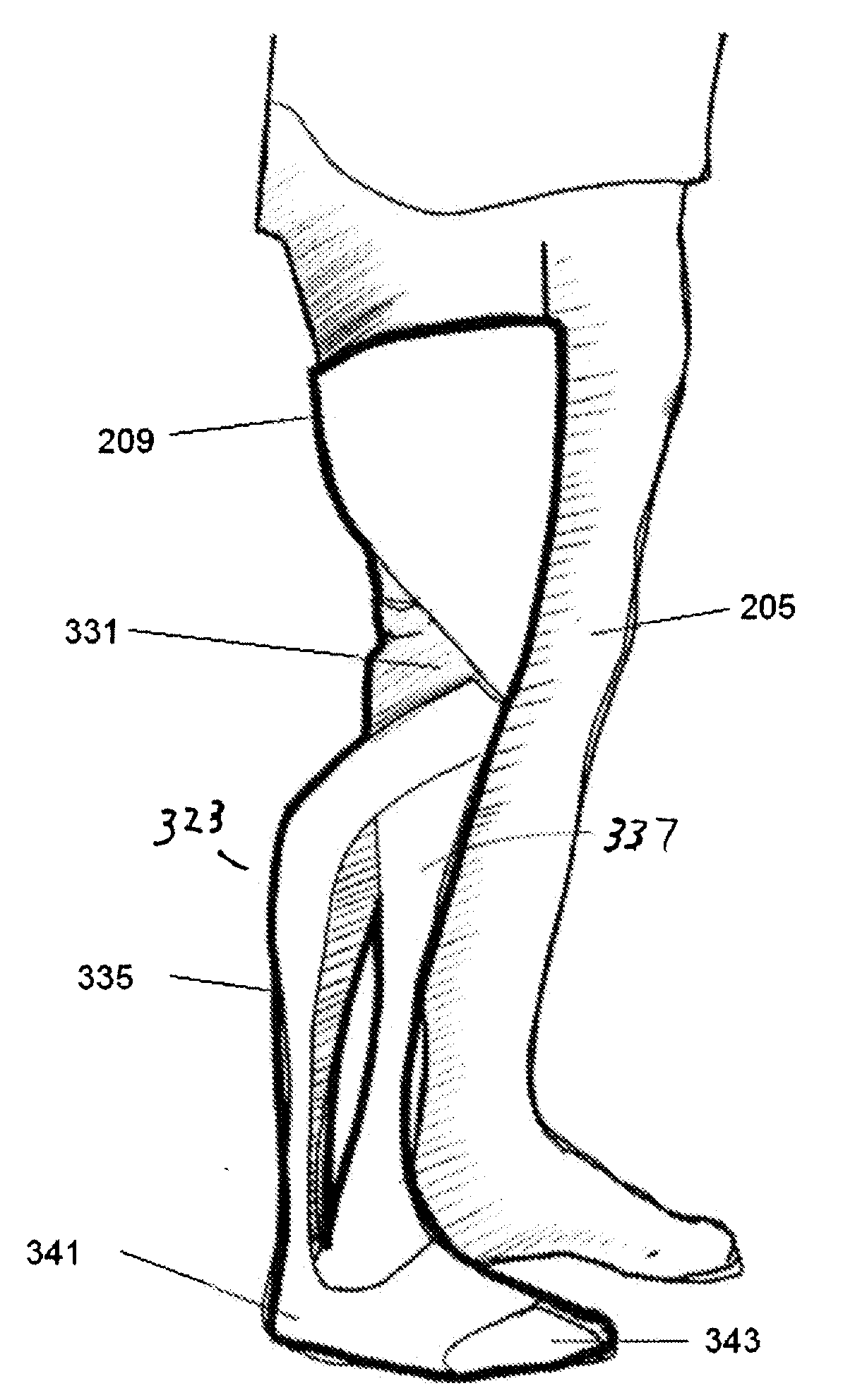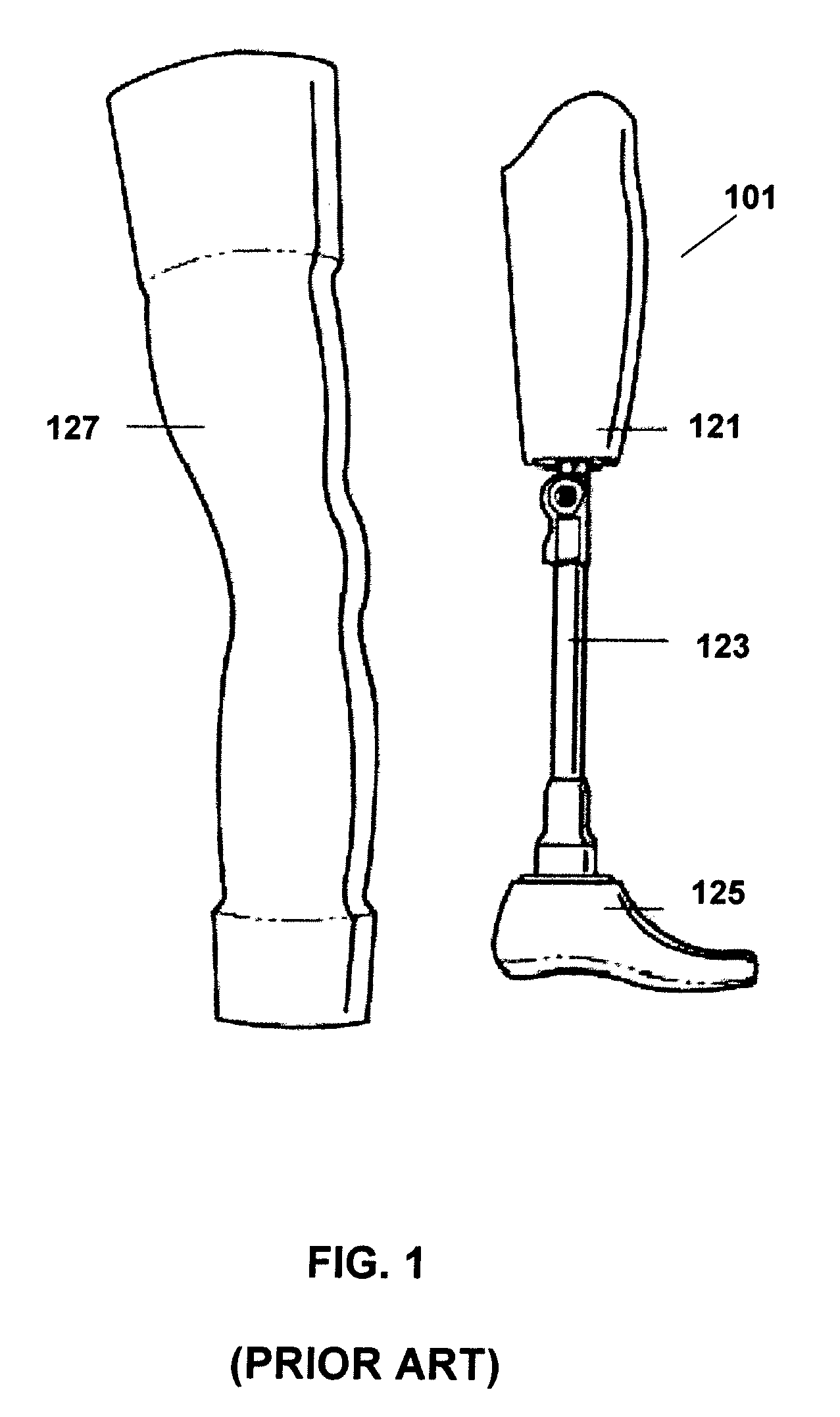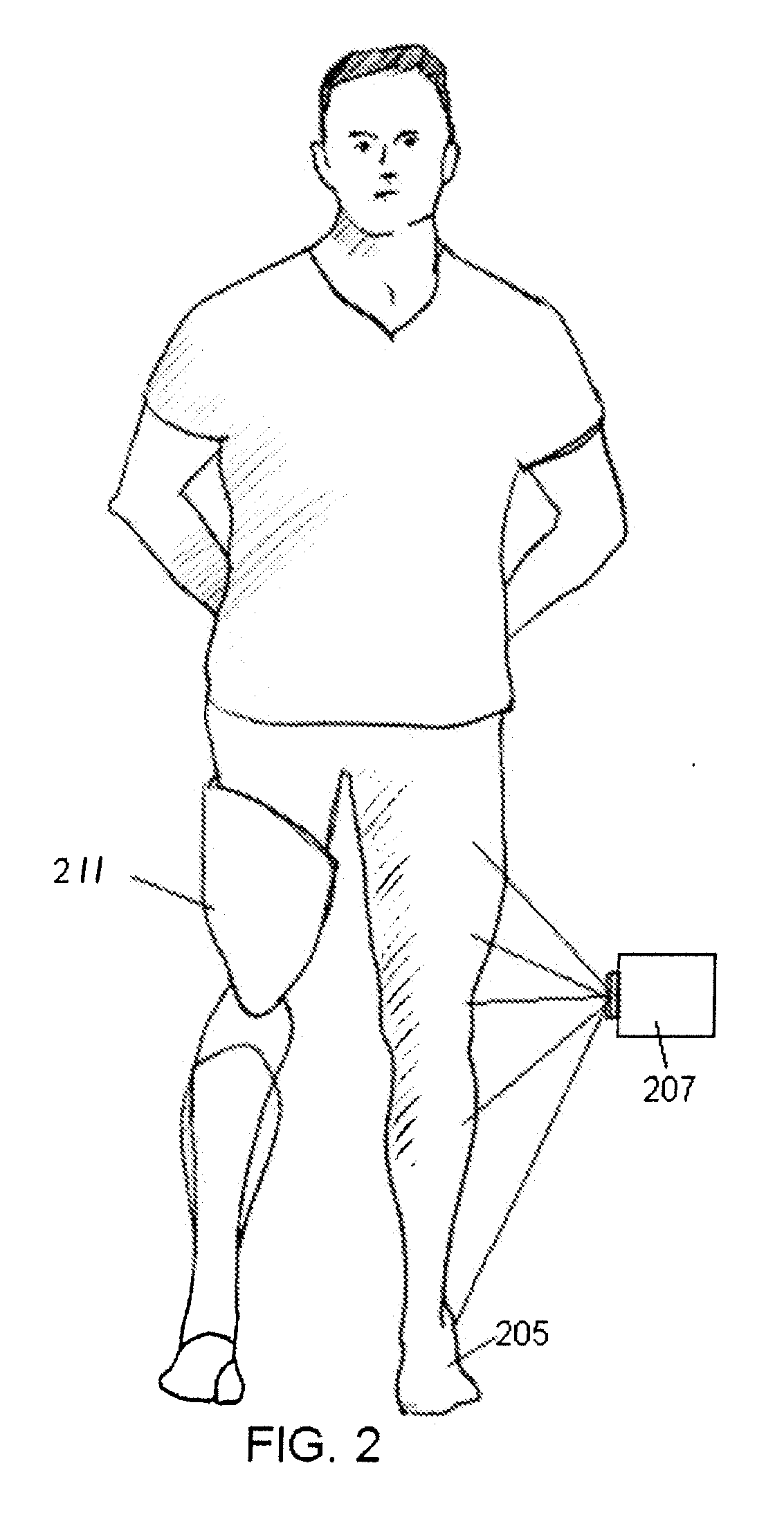Prosthetic limb
a technology for prosthetic limbs and limbs, applied in the field of prosthetic limbs, can solve the problems of not readily available to people, little thought given to the aesthetics of the human being for whom the device was intended, and many people do not have access to prosthetic limb manufacturers, etc., to achieve the effect of reducing rotational friction due to sliding components, reducing friction, and running more efficiently
- Summary
- Abstract
- Description
- Claims
- Application Information
AI Technical Summary
Benefits of technology
Problems solved by technology
Method used
Image
Examples
Embodiment Construction
[0035]The present invention is a custom designed prosthetic limb having an integrated construction. The inventive prosthetic limb is primarily directed towards prosthetic legs but the same design and fabrication processes can also be used to create prosthetic arms. The prosthetic limb is preferably designed by an industrial designer using a Computer Aided Design (CAD) program.
[0036]In an embodiment, the inventive prosthetic leg includes a load bearing component that functions as the human femur, knee, tibia and foot. The upper leg of the load bearing component is attached to a socket that engages the end of the amputated limb. The lower end of the upper leg and the upper end of the lower leg are coupled to the artificial knee. The lower end of the lower leg is coupled to an artificial foot. The mechanical data for the prosthetic leg may include the relative positions of the socket, knee and foot as well as the movement of these components based upon geometry and movement of the inta...
PUM
 Login to View More
Login to View More Abstract
Description
Claims
Application Information
 Login to View More
Login to View More - R&D
- Intellectual Property
- Life Sciences
- Materials
- Tech Scout
- Unparalleled Data Quality
- Higher Quality Content
- 60% Fewer Hallucinations
Browse by: Latest US Patents, China's latest patents, Technical Efficacy Thesaurus, Application Domain, Technology Topic, Popular Technical Reports.
© 2025 PatSnap. All rights reserved.Legal|Privacy policy|Modern Slavery Act Transparency Statement|Sitemap|About US| Contact US: help@patsnap.com



